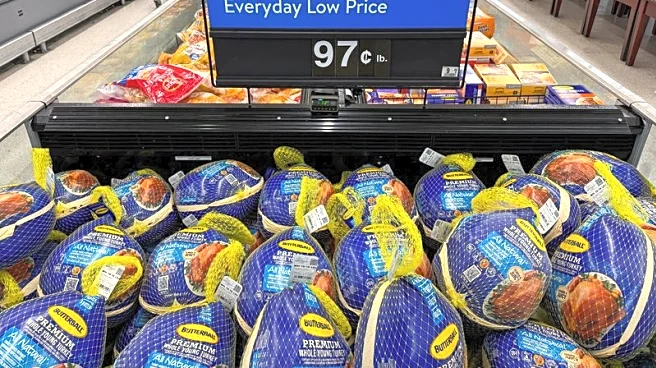What's Happening?
Grocery prices in the United States have been experiencing significant fluctuations due to various economic factors. According to recent data, prices for essential items like vegetables, fruits, and meats
have seen notable changes. For instance, bananas are priced at $1.49, while hamburger meat costs $11. The cost of a turkey for Thanksgiving has decreased to an average of $1.34 per pound, offering some relief for holiday shoppers. However, broader economic challenges, including tariffs from the Trump administration, immigration policies, and global natural disasters, have impacted the food supply chain, leading to price increases. The Bureau of Labor Statistics reported that grocery prices rose at their fastest pace in three years in August and continued to increase in September.
Why It's Important?
The rising grocery prices are a significant concern for American consumers, particularly families who are trying to manage their budgets amid economic uncertainty. More than half of Americans report stress related to food costs, with 53% considering it a major stressor. This situation reflects broader economic challenges, including high inflation rates and supply chain disruptions. As families struggle to afford groceries, they are forced to make difficult choices, such as buying smaller sizes, using coupons, and eating more meals at home. The impact of these price changes is felt across various demographics, affecting consumer sentiment and spending habits.
What's Next?
As grocery prices continue to fluctuate, consumers may need to adopt new strategies to manage their budgets effectively. This could include increased reliance on discount retailers like Aldi, which offers competitive prices for Thanksgiving essentials. Additionally, ongoing economic policies and global events will likely continue to influence food prices, requiring consumers to stay informed and adaptable. Policymakers may need to address these challenges to alleviate the financial burden on American families.












